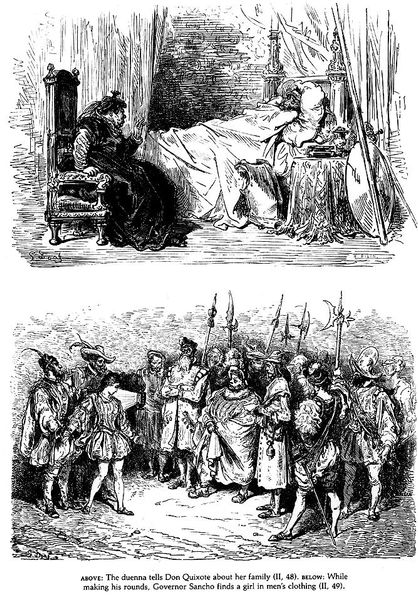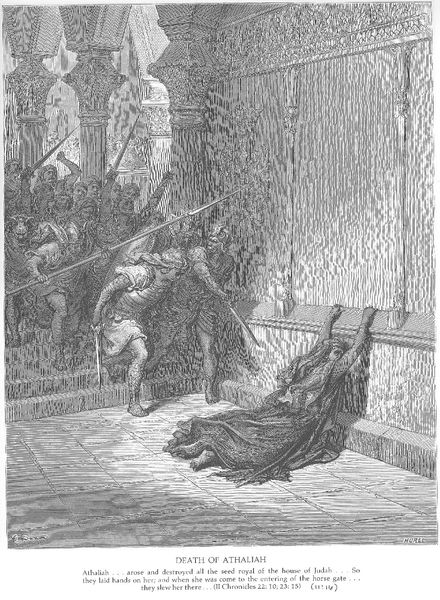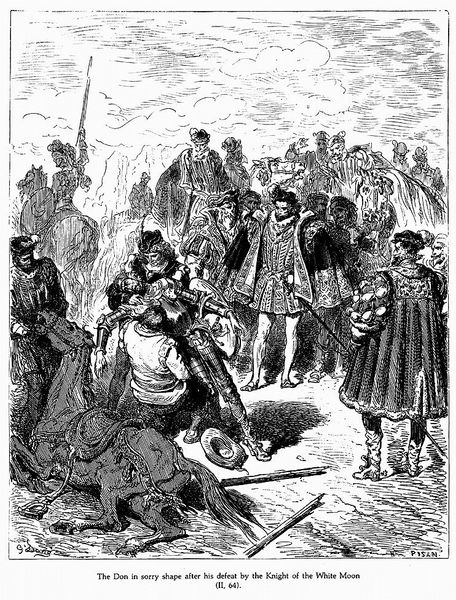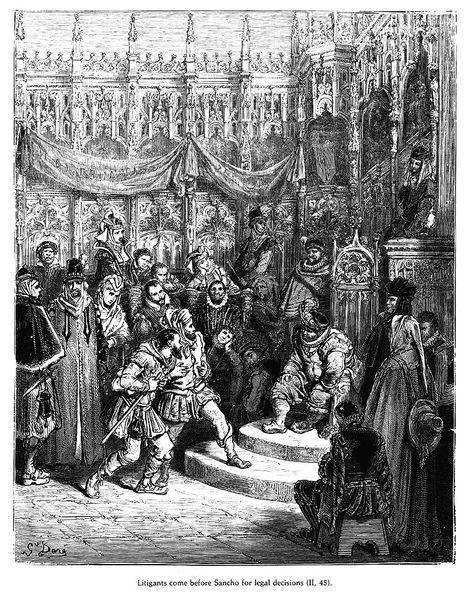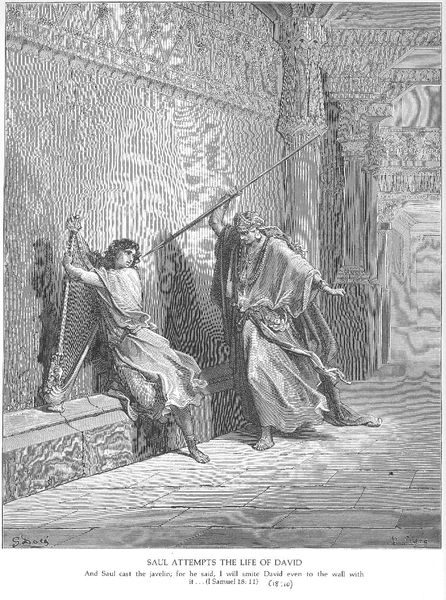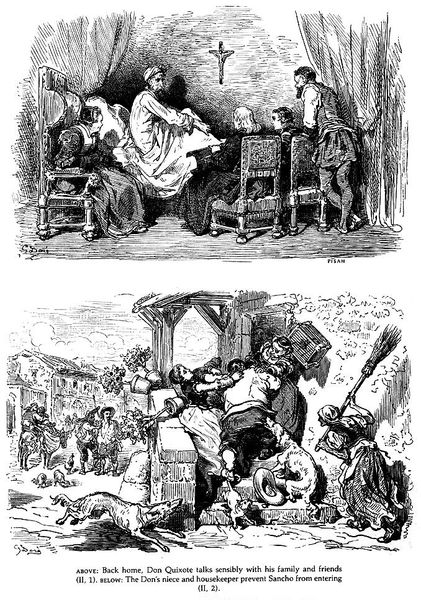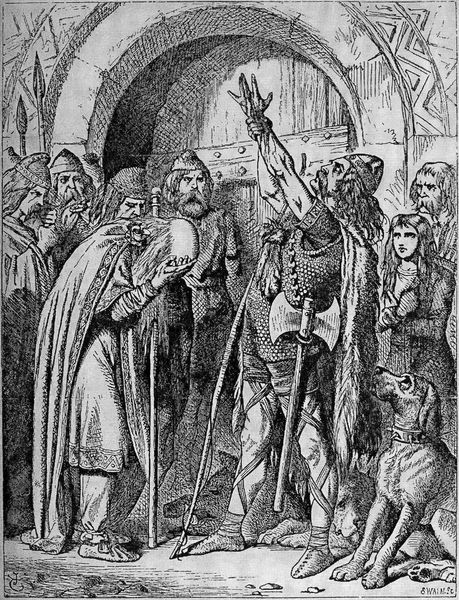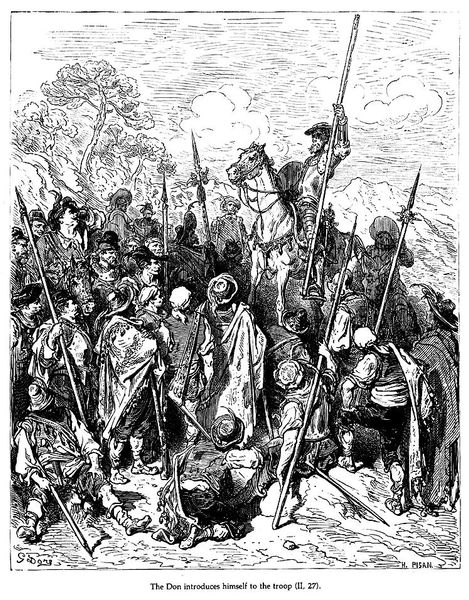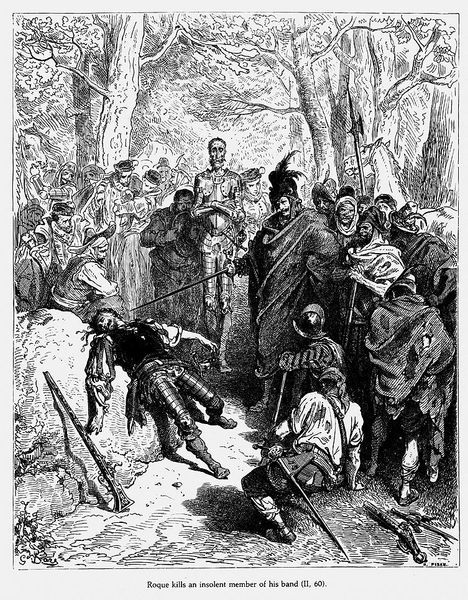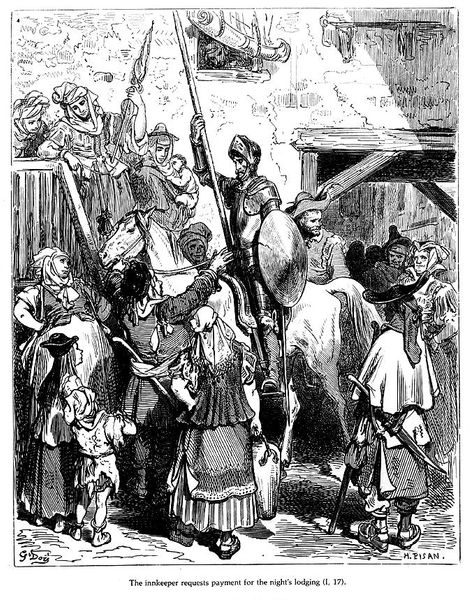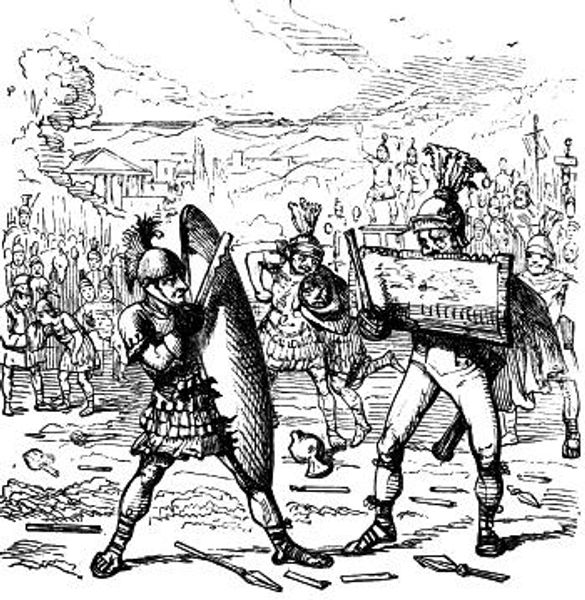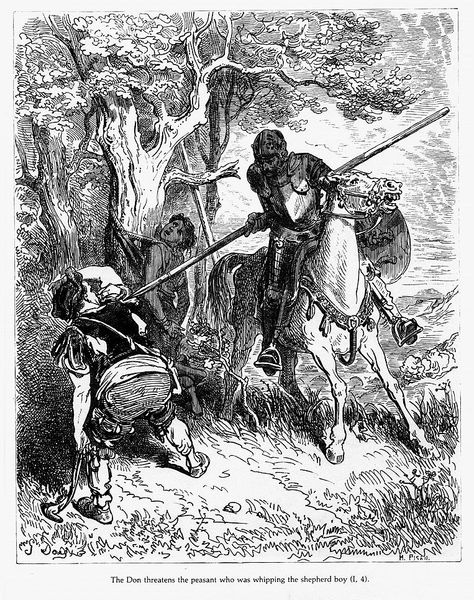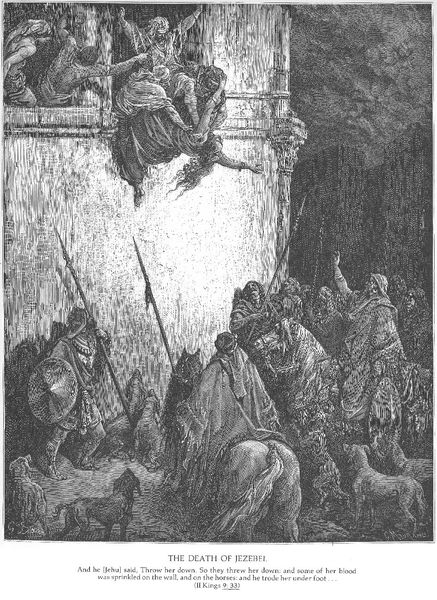
drawing, etching, paper, ink, pen
#
drawing
#
narrative illustration
#
narrative-art
#
pen illustration
#
etching
#
figuration
#
paper
#
ink
#
romanticism
#
pen
#
genre-painting
#
history-painting
Copyright: Public domain
Curator: Gustave Doré’s illustration, “Don Quixote,” captures a scene of raucous energy. The lines practically vibrate. What strikes you first? Editor: The sheer density of the drawing, the clear contrast. Doré really leaned into the reproducibility of the etching, its capability to produce hundreds of copies with intense detail. You see how the crosshatching and layering of ink builds form economically? Curator: Exactly. This is Doré illustrating Cervantes’ novel. It’s interesting how he captures Quixote's perceived madness not just through his face, but the symbolic weight of his surroundings— the theatricality of the scene with costumed figures feels heavy with meaning. Editor: Heavy is the right word! And yet, it is "heavy" in that mid-19th century way, through industrial production—this isn’t about individual mark-making, so much as a factory-style deployment of line. I mean, look at those costumes! How many layers upon layers of detail are there? What’s being communicated is not an innate sacred quality, but value, consumption, wealth on display and being mocked. Curator: I see that, though the references— the dunce cap, the theatrical costuming — echo the historical treatment of madness as spectacle and societal rejection. They tap into anxieties around societal order. Think of Foucault’s work on the history of madness… Doré visually embodies the cultural understanding, perhaps misunderstanding, of those deemed outside the norm. Editor: True, but what means are mobilized to "understand," in your terms? Mass reproduction, commodification...even a degree of spectacle *through* distribution! Curator: I'd not thought about it that way, you've definitely given me new food for thought. Thanks! Editor: My pleasure!
Comments
No comments
Be the first to comment and join the conversation on the ultimate creative platform.
